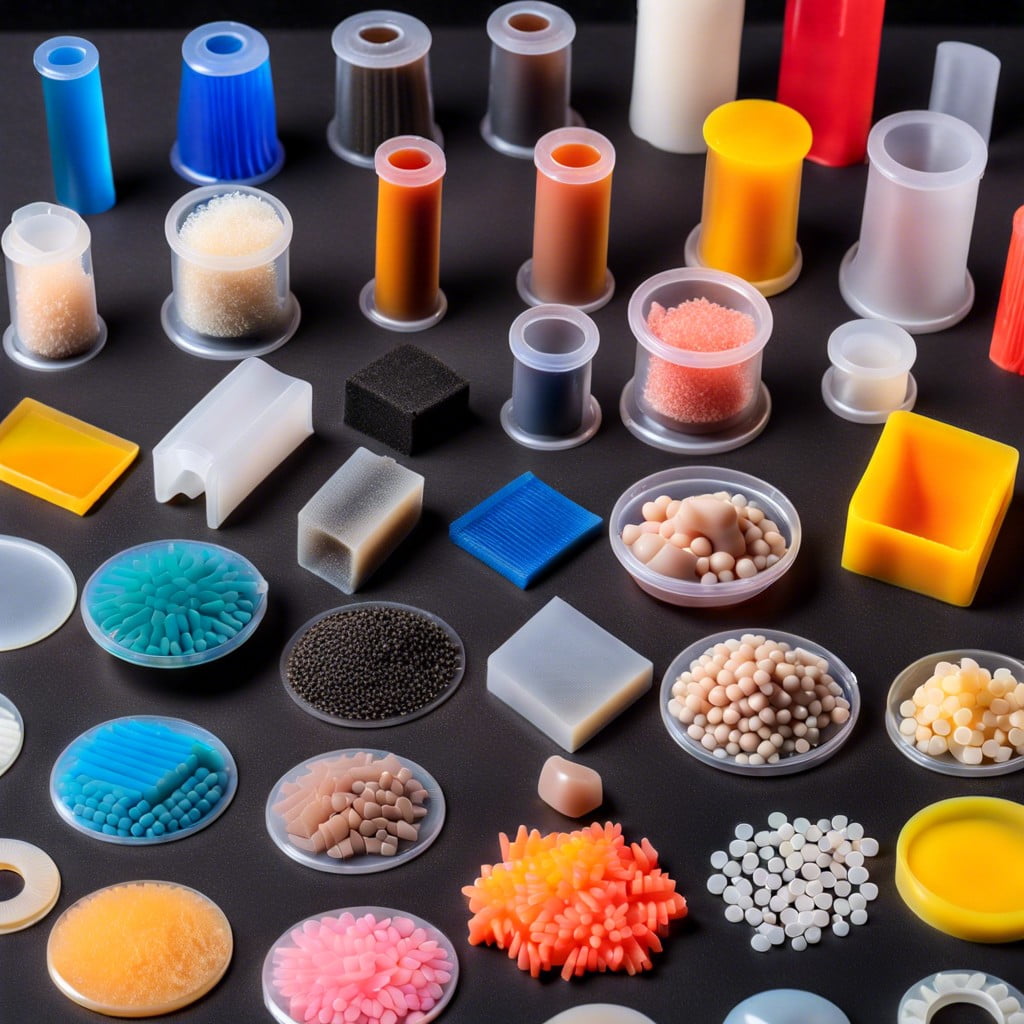In this article, you’ll learn what thermoplastic polymers are and how they’re used in various industries.
Key takeaways:
- Thermoplastics are adaptable and flow when heated, making them easy to process and recycle.
- They are lightweight yet strong, making them ideal for many applications.
- Thermoplastics have excellent resistance to chemicals, making them durable in different environments.
- They are cost-effective and easy to produce, saving money in the long run.
- Thermoplastics are used in packaging, construction, automotive, medical, and electronic industries.
Properties of Thermoplastics

Thermoplastics are a fun bunch, melting into a pliable state when heated and solidifying when cooled – magic, right? Imagine them as the chameleons of the polymer world, adaptable and ready to transform. They’re made up of linear or branched polymers, which means the molecules are arranged like spaghetti, either straight or slightly tangled, allowing them to flow past each other when heated.
This heat sensitivity allows for easy processing and recycling, making thermoplastics heroes in the sustainable materials saga. They’re generally lightweight, which is a lovely bonus, offering significant strength without the weighty consequences. Plus, their insulation properties make them excellent for electrical applications—no shocking experiences here!
Their resistance to chemicals is another superpower. Whether it’s battling acids, bases, or solvents, thermoplastics handle them with grace, ensuring longevity and durability in a variety of environments. This makes them ideal for applications ranging from everyday household items to critical healthcare equipment. Interesting, right? So, these materials aren’t just plastic; they’re plastic with a purpose!
Advantages
Thermoplastics are like the superheroes of the materials world—flexible yet tough! They melt under heat, making them superstars in reshaping and recycling processes. Imagine melting down a milk jug to craft a new picnic table—quite the transformation story, right?
Another perk is their lightweight nature, which makes them a breeze to handle and transport. Less backbreaking loads for construction workers—thumbs up!
Their resistance to chemicals means they don’t mind hanging out with harsh substances. Less drama, more durability.
And let’s not forget their insulation properties—thermoplastics are practically gossip barriers, keeping electrical conversations quiet and safe within their polymer chains.
Easy to produce and cost-effective to boot, thermoplastics help keep your wallet from weeping too much. So, they’re not only handy but also economic geniuses!
Disadvantages / Limitations
While thermoplastic polymers have many benefits, there are a few hitches that might make them less than perfect for some applications. First off, they tend to soften when exposed to high temperatures. Imagine a superhero who loses their strength when they’re too hot; useful, but with a notable weakness!
These materials can also be less resistant to solvents and chemicals. This means in environments where harsh chemicals are common, thermoplastics might throw in the towel faster than you’d hope.
Another point is that they can be more expensive when compared with other materials like metals in certain usage scenarios. It’s like opting for a fancy digital watch that tells you the weather, steps, and even your heart rate, but leaves your wallet a bit lighter.
Lastly, while they are recyclable, the recycling process itself can be complex and costly. It’s like deciding to redo your home’s décor but realizing you have to dismantle each piece of furniture with a different type of screwdriver.
Examples and Applications
Thermoplastic polymers are like the Swiss Army knife of the materials world because of their versatility. They’re used in everything from everyday household items to high-tech applications. Here’s a rundown of where you might find them:
– Packaging Galore: Next time you unwrap a snack, there’s a good chance you’re tearing into a product of thermoplastic packaging. These materials keep your treats fresh and your drinks from spilling.
– Building and Construction: They’re not just for water bottles! Thermoplastics are used in piping, insulation, and even flooring. Imagine a world where floors are as easy to reshape and recycle as plastic containers.
– Automotive Parts: Cars are full of thermoplastics, from the dashboard to the bumper. They help make vehicles lighter, which is like giving your car a diet for better gas mileage.
– Medical Devices: In the medical field, these polymers are a game changer. They’re used in disposable syringes, blood bags, and other gadgets that doctors can’t live without.
– Electronic Gadgets: Your smartphone case might just be a thermoplastic hero, protecting your precious tech from daily bumps and bruises.
This barely scratches the surface, but it gives you a taste of how thermoplastics play a role in various aspects of modern life. They shape a lot more than just your plastic water bottle!
Recap




